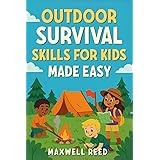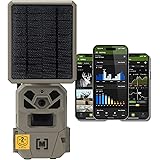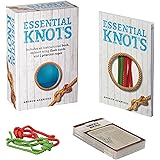Mastering Essential Survival Tips: A Comprehensive Guide for Unexpected Emergencies
Imagine finding yourself in an unfamiliar wilderness, far from any help, with nothing but your wits and a few essential items. The world can change in an instant, and being prepared for the unforeseen is not just a hobby; it is a critical life skill. The accompanying video offers a concise, visual demonstration of various fundamental survival tips and self-defense techniques, showcasing actionable insights that could prove invaluable. This article delves deeper into these life-saving concepts, expanding on the crucial knowledge required to navigate emergencies with confidence and competence.
Indeed, understanding and practicing these core survival tips can dramatically increase your chances of enduring a crisis, whether it’s a natural disaster, a lost trail, or an unexpected breakdown. We will explore each facet of preparedness, ensuring you gain a comprehensive understanding of what it takes to thrive when all else seems lost. Consequently, this detailed guide aims to complement the visual learning experience, providing the context and depth necessary for true mastery.
The Indispensable Role of Mental Fortitude
Before any physical skill can be effectively deployed, the mind must be a formidable ally. Mental resilience is arguably the most crucial asset in any survival scenario, dictating how you perceive and react to extreme pressure. Cultivating a robust mindset empowers you to make rational decisions, maintain hope, and overcome seemingly insurmountable obstacles.
Tip 1: Cultivating a Resilient Mindset
Maintaining a positive mental attitude is paramount when faced with dire circumstances. Fear and panic are insidious foes, capable of paralyzing decision-making and depleting vital energy. Focus on immediate, achievable tasks and break down larger problems into smaller, manageable steps. This disciplined approach prevents overwhelm and fosters a sense of control, which is crucial for long-term survival.
Tip 2: Understanding the “Rule of Threes”
The “Rule of Threes” provides a framework for prioritizing needs in a survival situation. You can typically survive approximately three minutes without air, three hours without adequate shelter in harsh conditions, three days without water, and three weeks without food. This hierarchy underscores the immediate importance of air, shelter, and water above all else, guiding your initial actions effectively.
Securing Your Immediate Environment: Shelter and Fire
Exposure to the elements remains one of the leading causes of fatalities in survival situations. Consequently, creating an effective shelter and mastering fire craft are among the first and most vital survival tips you must implement. These skills provide protection, warmth, and a sense of security.
Tip 3: Constructing Emergency Shelters
A well-constructed shelter protects you from hypothermia, hyperthermia, rain, and wind. Imagine if you were caught in a sudden blizzard; a debris hut, lean-to, or snow cave could be the difference between life and death. Utilize natural materials like fallen branches, leaves, and pine needles for insulation, ensuring your shelter is just large enough for you to fit comfortably, minimizing heat loss.
Tip 4: Mastering Fire Starting Techniques
Fire provides warmth, light, a means to purify water, cook food, and signals for rescue. Learning multiple methods of fire starting, beyond just a lighter or matches, is an essential survival tip. Practice with a ferro rod, flint and steel, or even friction methods like a bow drill; knowing how to ignite tinder in various conditions is invaluable. Furthermore, always gather your tinder, kindling, and fuel wood before attempting to start a flame, ensuring a steady supply.
Tip 5: Staying Warm and Dry
Beyond fire and shelter, understanding how to layer clothing and protect yourself from moisture is critical. Wet clothes can accelerate heat loss, leading to hypothermia even in moderate temperatures. Utilize natural materials for additional insulation if possible, such as dry leaves or moss packed inside clothing. Moreover, elevate yourself off the cold ground within your shelter to prevent conductive heat loss.
Sustaining Life: Water and Food Procurement
Once your immediate safety from the elements is established, your next priority is securing vital resources. Water and food are fundamental to survival, providing the energy and hydration your body needs to endure.
Tip 6: Identifying and Collecting Water Sources
Dehydration can rapidly incapacitate an individual. Learn to identify potential water sources like rivers, streams, natural depressions, and dew. Collecting rainwater using improvised tarps or large leaves is also an effective method. Furthermore, remember that clear water is not always safe water; purification is always necessary.
Tip 7: Effective Water Purification Methods
Consuming contaminated water can lead to severe illness, compounding a survival situation. Boiling water for at least one minute is the most reliable method for killing pathogens. Other effective survival tips include using purification tablets, a portable filter, or constructing a solar still, which uses condensation to purify water. Never drink untreated water unless it is your absolute last resort.
Tip 8: Safe Foraging for Edible Plants
While food is less urgent than water, knowing how to safely forage can sustain you long-term. Learn to identify local edible plants, berries, nuts, and roots that are common in your region. However, exercise extreme caution, as many plants are poisonous; when in doubt, do not eat it. Moreover, practice the universal edibility test if absolutely necessary, but prioritize known safe sources.
Tip 9: Primitive Trapping and Hunting Basics
Foraging alone may not provide sufficient calories in a long-term survival scenario. Understanding basic primitive trapping techniques for small game, such as snares, can provide a vital food source. Furthermore, learning how to improvise a spear for fishing or small animal hunting can be a game-changer. Remember, these skills require practice and a deep understanding of local wildlife behavior.
Navigating the Unknown and Calling for Help
Getting lost is a common scenario in the wilderness, and knowing how to navigate and signal for rescue are paramount survival tips. Your ability to orient yourself and communicate your location can be the difference between a swift rescue and prolonged hardship.
Tip 10: Basic Navigation Without Modern Tools
Should your GPS fail or a map be lost, basic navigation skills become critical. Learn to use the sun and stars for direction, understanding that the sun rises in the east and sets in the west. You can also use a stick to create a shadow stick compass. Moreover, observing natural indicators like moss growth or prevailing wind patterns can offer clues to your orientation, guiding your journey.
Tip 11: Crafting Improvised Signaling Devices
If you are lost, your primary goal becomes attracting attention. Creating large ground-to-air signals, such as an S.O.S. pattern with rocks or logs, is effective. A signal fire, producing significant smoke during the day and light at night, is another powerful tool. Imagine if a search plane flew overhead; a bright signal mirror or a whistle could alert them to your presence, saving crucial time.
Improvised Tools, Practical Crafts, and Self-Defense
The ability to create and adapt tools from your environment is a hallmark of true survival prowess. Moreover, knowing how to protect yourself is an unfortunate but necessary skill in a world where threats can come from various sources.
Tip 12: Making Cordage from Natural Materials
Cordage is incredibly versatile in a survival situation, useful for building shelters, creating traps, and fashioning tools. Learn to twist strong ropes from natural fibers like inner bark, plant stalks, or even strips of leather if available. This fundamental craft enhances your ability to perform numerous other survival tasks. Consequently, it is a skill that dramatically improves your overall self-reliance.
Tip 13: Crafting Essential Primitive Tools
Your hands are your primary tools, but improvising others can greatly enhance your capabilities. Learn how to knap a basic stone knife or scraper, essential for processing food or preparing materials. Fashioning a sturdy spear from a branch can serve for hunting, fishing, or defense. Furthermore, understanding the principles of leverage and simple machines allows you to build more complex structures or move heavy objects.
Tip 14: Basic Self-Defense Techniques and Situational Awareness
While often associated with urban environments, self-defense skills are equally important in the wilderness. Encountering aggressive animals or hostile individuals is a potential threat. Therefore, maintaining situational awareness is paramount, allowing you to avoid dangerous encounters before they escalate. Learn basic defensive postures and how to use improvised weapons for protection. Your ability to defend yourself and your resources is a critical, often overlooked, survival tip.
Administering Critical First Aid in Remote Settings
Injuries and illnesses are amplified in survival situations where medical help is unavailable. Having fundamental first aid knowledge is not just a benefit; it is an absolute necessity for yourself and any companions.
Tip 15: Treating Wounds and Bleeding
Cuts, scrapes, and deeper wounds are common in the outdoors. Learn how to clean and dress wounds to prevent infection, using sterilized cloth or improvised bandages. Knowing how to apply direct pressure to stop severe bleeding is a life-saving skill that everyone should possess. Furthermore, understand the signs of infection and how to manage them in a remote setting.
Tip 16: Addressing Fractures and Sprains
A broken bone or severe sprain can severely impair mobility and create immense pain. Learn how to improvise splints using branches, bark, and cordage to stabilize an injured limb. Proper immobilization prevents further damage and reduces pain, allowing for a safer, albeit slower, movement towards safety. Consequently, this skill is vital for maintaining functionality.
Tip 17: Managing Hypothermia and Heatstroke
Extreme temperatures pose significant health risks. Understand the symptoms and first aid for hypothermia (severe cold) and heatstroke (severe heat). For hypothermia, focus on rewarming the body gradually with dry clothing and shelter. For heatstroke, cool the body rapidly and rehydrate. Recognizing these conditions early is crucial for effective intervention. Furthermore, prevention through proper clothing and hydration is always the best approach.
Advanced Wilderness Acumen and Preparatory Measures
Beyond immediate crisis response, a deeper understanding of the environment and ongoing preparedness can transform survival from mere endurance to confident navigation. These advanced survival tips refine your capabilities and minimize future risks.
Tip 18: Reading Weather Patterns for Safety
The weather can change dramatically and quickly, especially in mountainous or coastal regions. Learn to interpret cloud formations, wind direction, and other natural signs to predict upcoming storms or temperature shifts. This foresight allows you to prepare your shelter, gather resources, or seek safer ground before conditions worsen. Consequently, this knowledge is a powerful tool for proactive safety.
Tip 19: Safe Interaction with Wildlife
Encountering wildlife is inevitable in the wilderness. Learn about the behavior of common animals in your area, understanding how to avoid conflicts and what to do if an encounter occurs. Making noise on trails to avoid surprising animals, storing food properly, and knowing how to deter a curious or aggressive animal are all vital survival tips. Respecting their space and understanding their signs is key to peaceful coexistence.
Tip 20: Essential Knot Tying for Various Situations
Knowing a few basic, strong knots can prove incredibly useful. Knots like the bowline, square knot, taut-line hitch, and clove hitch have countless applications in shelter building, securing gear, making traps, and even first aid. Practice tying them until they become muscle memory. Furthermore, understanding which knot to use for a specific purpose enhances your efficiency and safety.
Tip 21: Creating a Bug-Out Bag (BOB) Strategy
A “Bug-Out Bag” is a pre-packed kit containing essential supplies to sustain you for at least 72 hours in an emergency. This proactive survival tip includes water, food, first aid, navigation tools, and other critical gear. Having a BOB ready allows for rapid evacuation when immediate threats arise, eliminating the need to scramble for supplies during a crisis. Consequently, it streamlines your response to sudden emergencies.
Tip 22: Developing a Family Emergency Plan
Beyond individual preparedness, a family emergency plan is crucial. This plan should outline meeting points, communication strategies if cell service is down, and designated responsibilities for each family member. Practice drills and review the plan regularly to ensure everyone knows their role and what to do in various scenarios. Therefore, collective preparedness strengthens your overall resilience.
Tip 23: Practicing and Honing Your Survival Skills Regularly
Survival skills are perishable; they require regular practice to maintain proficiency. Spend time in nature, practicing fire starting, shelter building, and navigation. Engage in self-defense training and keep your first aid knowledge current. Imagine if you only practiced once and then faced a real emergency; consistent practice builds confidence and competence. Remember, these critical survival tips are not merely theoretical concepts but practical actions that can save your life.











